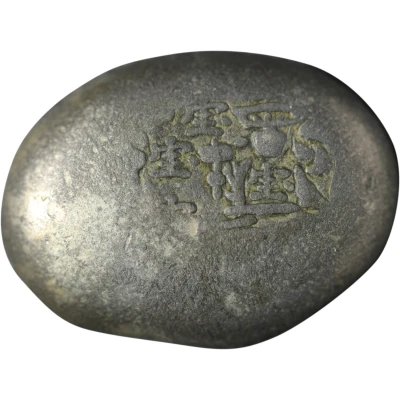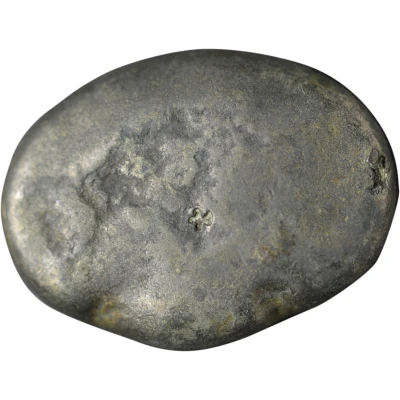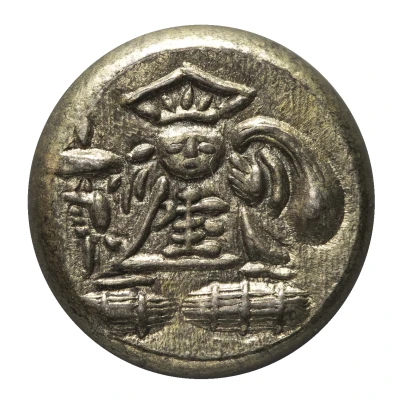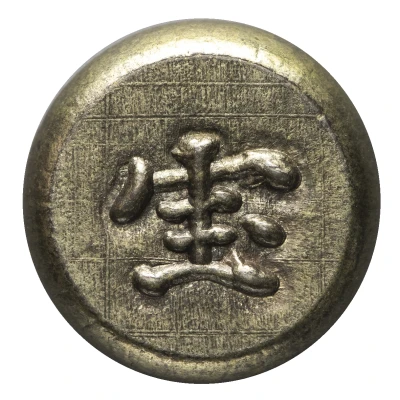


© Ginza Coin Auctions
Mameitagin "Hōei Mitsuhō Mameitagin" Uniface Daikoku ND
| Billon (.320 silver) | - | - |
| Issuer | Japan |
|---|---|
| Type | Standard circulation coin |
| Years | 1710-1711 |
| Currency | Monme Silver / Monme-Gin / Ginme (1601-1874) |
| Composition | Billon (.320 silver) |
| Shape | Round (irregular) |
| Technique | Hammered (bean) |
| Demonetized | 4 February 1723 |
| Updated | 2024-10-05 |
| Numista | N#288025 |
|---|---|
| Rarity index | 97% |
Reverse
Rough blank
Interesting fact
One interesting fact about the Mameitagin "Hōei Mitsuhō Mameitagin" (Uniface Daikoku) ND (1710-1711) coin from Japan is that it was issued during a time of economic reform in Japan, known as the Hōei era, which aimed to stabilize the country's economy and promote trade. The coin's unique design, featuring the god Daikoku on one side and an inscription on the other, reflects the cultural and religious beliefs of the time. Additionally, the use of billon, a mixture of silver and copper, in the coin's minting process was a common practice in Japan during this period, as it allowed for the creation of coins with a silver content that was still considered valuable but less expensive than pure silver.

